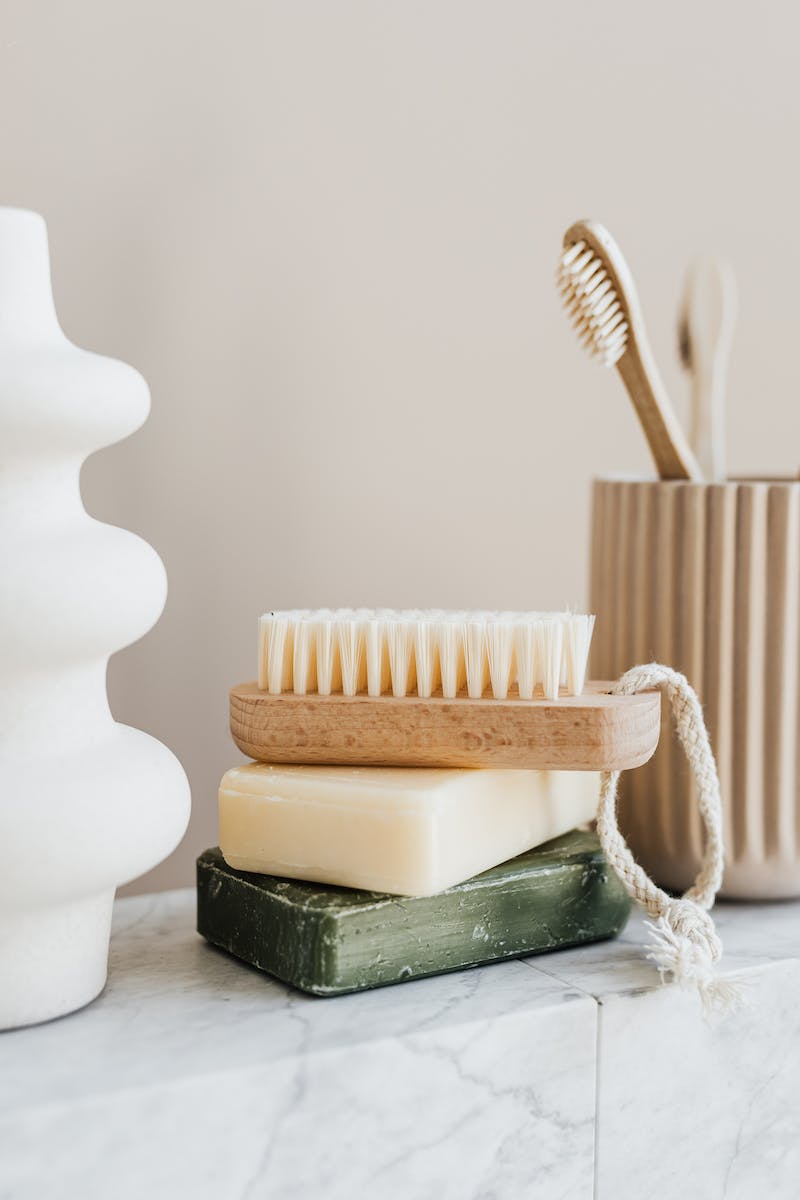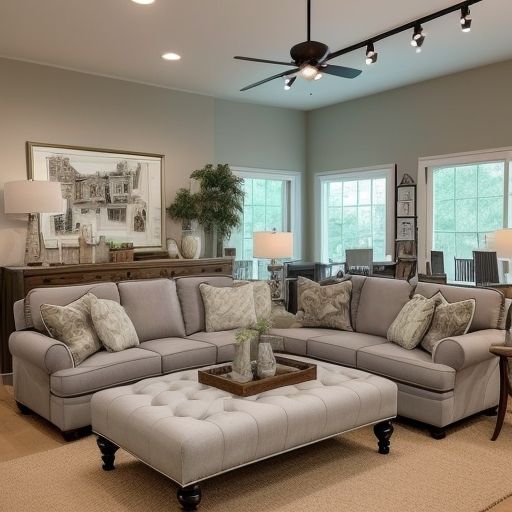Advertisement
5 Tips to Minimize Pollen in Your Home Through Cleaning

5 cleaning hacks to reduce pollen in your home
1. Regularly Clean and Vacuum
If you’re one to suffer from pollen allergies, one of the most effective ways to reduce pollen in your home is through regular cleaning, specifically vacuuming. Pollen can quickly accumulate on your floor, furniture and other areas around your house. Given that it’s so light, it can easily float in the air as well.
This microscopically granular substance finds its way indoors onto our curtains, couches, carpets, etc., by clinging onto our clothes, pets, or even through open doors and windows. Cleaning these surfaces is essential in order to remove the accumulated pollen.
Vacuuming is one of the most efficient ways to do this, particularly if your vacuum cleaner has a HEPA filter. It can pick up tiny particles including pollen, ensuring they don’t keep circulating in your home.
Let’s say every day when you return home after a day out, you thoroughly dust off your clothing before entering your house, leaving shoes outside, and immediately take a shower. Despite these efforts, you still sneeze and experience watery eyes. Taking up the habit of vacuuming regularly can help to significantly reduce such allergic reactions.
- Invest in a vacuum cleaner with a HEPA filter for best results.
- Vacuum all carpeted floors and rugs at least once a week.
- Don’t forget upholstered furniture and drapes, as pollen can cling to fabric.
- Make sure to empty the vacuum cleaner bag outside, to prevent reintroducing the trapped allergens back into the living space.
- Consider wearing a dust mask while vacuuming to avoid inhaling allergens kicked up during the process.
- Consider getting a robot vacuum that can clean daily without requiring human intervention, making maintaining a clean home manageable.
2. Use Air Purifiers
Air purifiers are effective tools for reducing pollen in your home. These devices use filters to trap airborne particles, like dust and pollen, helping improve the indoor air quality.
Because pollen is typically small and light, it can stay suspended in the air for longer periods and travel around your home thus triggering allergies. You can’t see these floating enemies, but you can certainly feel their effects.
Installing an air purifier with a HEPA filter will ensure that the majority of pollen particles in the room become trapped before they have a chance to settle, reducing your exposure considerably.
For instance, you may notice that on high-pollen days, even spending time indoors makes no difference to your allergy symptoms. Introducing an air purifier into high-traffic areas, or spaces where you spend a lot of time (such as your bedroom), could make a noticeable different to your comfort levels.
- Invest in a HEPA air purifier to effectively capture and reduce pollen particles in the air.
- Regularly clean or replace filters according to the manufacturer’s instructions.
- Use the air purifier in rooms where you spend most of your time.
- Choose an air purifier size that fits best for your room. Too small might not be effective and too big might consume more power.
- Running the air purifier throughout high-pollen seasons could significantly increase indoor air quality.
- Avoid oscillating air purifiers, as they could stir up more allergens into the air.
3. Control Indoor Humidity
Damp environments contribute to higher particulate matters in the air including mold spores and pollen. The moisture allows these particles to swell and rupture releasing tiny proteins which can be irritants causing allergic reactions.
Keeping your indoor humidity levels within the recommended range of 30-50% can help to reduce pollen potency thereby reducing allergic reactions.
Using a dehumidifier or air conditioner are effective ways to control your indoor humidity. These devices remove excess moisture from the air, making it less hospitable for allergens.
If you constantly find yourself coughing and sneezing in your own house – despite doing regular cleans and changing out all the filters – then monitoring and controlling the humidity levels could be the answer to your problems.
- Invest in a dehumidifier and run it during humid months or when your home feels damp.
- Monitor humidity levels with a hygrometer and aim to keep indoor humidity below 50%.
- Use air conditioning which acts as a natural dehumidifier during summer months.
- Maintain your HVAC system and replace filters regularly.
- Ensure proper ventilation in your home; remember that kitchens and bathrooms can produce a lot of humidity.
- Consider using a desiccant to absorb excess moisture.
4. Choose Hypoallergenic Bedding
Your bedroom should be a sanctuary, free from factors like heavy pollen counts which can affect your sleep. Dust mites, another common allergen, flourish in bedding, and adding pollen to this mix is a recipe for allergies.
Hypoallergenic bedding is designed to prevent allergens, including pollen, dust mites, and pet dander, from adhering to the fabric. They can also prevent the dispersal of lodged allergens back into the air.
The encapsulation mechanism of hypoallergenic covers ensures that allergens cannot pass through the material of your bedding, essentially creating an impermeable barrier between you and the allergens.
Imagine going to bed at night but constantly waking up due to a runny nose and itchy eyes. You haven’t been around any obvious source of allergies during the day, yet you still feel symptomatic. Well, allergens in your bedding may be to blame and switching to hypoallergenic bedding can provide relief.
- Invest in hypoallergenic pillowcases, mattress covers, and comforters.
- Wash bedding weekly in hot water to kill dust mites and remove allergens.
- Avoid down-feather pillows or blankets which can attract more dust mites.
- Vacuum your mattress regularly using a vacuum with a HEPA filter.
- Replace old mattresses that can harbor high levels of allergens.
- Keep pets out of bedrooms since they can transport pollen into bedding areas.
5. Keep Pollen Outdoors
No matter how hard we try, it’s almost impossible to rid our homes completely of pollen. However, various measures can significantly help keep these unwanted invaders outdoors.
Closing doors and windows, especially during peak pollen times or seasons, is one such simple yet effective tactic. Taking off shoes outside and changing clothes once entering the house prevents bringing in pollen.
Homeowners should also ensure good outdoors to indoors practices like showering after outdoor activities, having a specific place for shoes and outerwear, and wiping pet paws before reentry into the living space.
To put this into perspective, imagine coming home from a hike on a spring afternoon. Instead of directly sauntering onto your plush carpet, you take off your shoes outside, shake off your coat, and head straight to the shower. Afterwards, you slip on fresh new clothes. This reduces the chances of spreading pollen throughout your home.
- Keep windows and doors closed during high pollen count days.
- Remove shoes outside the home to prevent tracking in pollen.
- Change clothes after being outdoors and wash worn clothing promptly.
- Shower after outdoor activities to rid your body of any caught pollen.
- Clean pets who have been outdoors before they come inside.
- Ideal for clothes lines, avoid air-drying clothes and bedding outdoors where they could gather pollen.
Pollen Reduction Summary Table
| Cleaning Hack | Key Points |
|---|---|
| Vacuum Regularly | Invest in a vacuum with HEPA filter, focus on all cloth-based surfaces, empty bag outside, consider using a mask or a robot vacuum |
| Use Air Purifiers | Invest in a device with a HEPA filter, replace filters regularly, use in rooms you spend most time in, consider power consumption per room size, run through-out high-pollen seasons |
| Control Indoor Humidity | Invest in a dehumidifier or use AC, monitor with hygrometer (aiming for less than 50% humidity), maintain HVAC system, ensure good home ventilation, consider desiccants |
| Choose Hypoallergenic Bedding | Invest in covers for pillows and mattresses, wash weekly in hot water, avoid down-feather products, regular mattress vacuuming, pet-free bedrooms |
| Keep Pollen Outdoors | Closed doors and windows during peak pollen times, outdoor shoe removal and clothing change, post-outdoor activity showers, specific storage places for outdoor wears, wiping pet paws |
Hopefully, these five cleaning hacks will help you reduce pollen in your home effectively. Remember, consistency really is key when it comes to keeping allergens like pollen at bay. With a regular cleaning routine focused on these tips, you should be able to breathe easier and lessen the severity of allergy symptoms.











